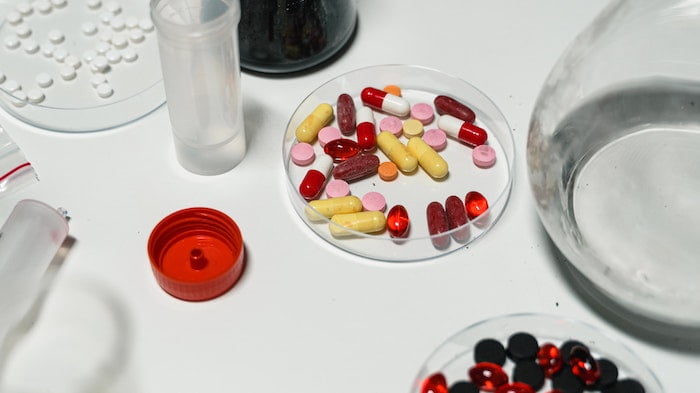- Home
- Addiction Guides
- Foster Carers and the Signs of Addiction
Foster Carers and the Signs of Addiction
Whether you’re struggling with addiction yourself, or helping a loved one who is, addiction is a difficult beast.
There’s a lot of complicated emotions that come with substance dependency.
It can be very hard to know how to cope, who to reach out to, or what resources are available.
Quite often, people dealing with addiction can feel isolated, lonely and dejected.
This can be made even more complicated when we may already be dealing with a difficult change in our personal and home lives.
Moving house is thought to be one of the most stressful experiences we can go through. Pair this with experiencing the care system, it’s understandable that many children and young adult in foster care may struggle with their mental health.
But what can foster parents do to help the children in their care cope with these situation?
This page hopes to provide a thorough guide to substance abuse in order to help foster families give the children in their care the best support possible.
What is Foster Care?

UK Fostering define foster care as ‘a way of offering children and young people a home while their own family are unable to look after them.’ [1]
Any child that is officially in the care of others that are not their birth parents classes as a foster child.
There are many reasons why children may need to go into a temporary home.
Some of these reasons include:
- serious illness in the family
- bereavement of a primary carer
- issues with securing and funding safe housing
- issues related to child neglect, such as sexual abuse, physical abuse, or emotional abuse
This list is not exhaustive; there are many other reasons that children may experience some time in foster care.
Typically, these reasons mean that the birth family of the child is currently unable to meet their care needs, and it is in the best interest of the child to have alternative housing and guardianship for a period.
Foster Care in the UK
In England, there are regulations around who can foster, and for how long.
The government have a list of conditions that you must meet in order to be able to foster a child legally.
These are:
- the foster parent must be over 18 (in some cases, 21)
- the foster parent must have the right to work in the UK
- the foster parent must be available to take care of the child or young adult in their care (this sometimes means being available full-time to do so)
- there must be a spare room available in the home you are currently living in [2]
In order to foster, you will need to complete a fostering assessment.
As part of being a foster carer, there are some activities that you are expected to engage with:
- caring for the child alongside other relevant parties (local authorities, social workers, healthcare providers and potentially the child’s birth parents and family)
- attend appropriate meetings and training
- keeping records
- be willing to advocate for the child in your care
What are the Different Types of Fostering?

There are various types of fostering.
These include:
- emergency fostering
- respite fostering
- remand fostering
- short term fostering
- long term fostering
- fostering for adoption
- therapeutic fostering [3]
These typically determine how long the child will be in your care.
The longer a child is in your care, the more chance you will get to know them. If the child you are supporting is currently struggling with drug and alcohol use, then it is important to know how to help them in this situation, regardless of the period of time they will be in your care.
Addiction and Drug and Alcohol Use in Foster Children and Young Adults

Addiction is classed as a chronic disorder by medical professionals. [4]
This is very important, as it shows that addiction is a condition that needs to be treated with appropriate help and support.
Addiction usually refers to substance addiction – that is, the regular use and, in most cases, reliance on drug and alcohol.
How Common is Addiction in Foster Children and Young Adults?
Research into young person’s substance abuse has found that the number of young people using drugs has decreased by 55%.
However, between 2020 and 2021, there were still a total of 11,013 children and young adults in contact with specialist drug and alcohol services. [5]
Out of these,
- 41% of those in treatment reported having issues with alcohol dependency
- 89% were in treatment for cannabis use
- 12% for ecstasy
- 9% for cocaine
- 3.7% for benzodiazepines
- 1.2% for codeine
- 0.4% for heroin [6]
This suggests that whilst the use of illegal drugs and alcohol is quite common, there is a rise in the use of prescription drugs in young people.
A 2009 study of over 400 17 year-olds concluded that there is a higher prevalence of drug and alcohol use among those with a foster history than among those in the average population.
The study showed that:
- 45% of children and young adults had used drugs or alcohol in the past six moths
- 49% had used drugs in their lifetime
- 35% met criteria for diagnosable substance use disorder [7]
This indicated that there is a correlation between addiction and foster care, meaning that children in foster settings have a higher risk of developing a dependency on substances.
What Might be Some of the Factors of Addiction in Foster Children and Young Adults?

Addiction is often associated with mental health issues.
A large majority of individuals who seek treatment for addiction also have a diagnosis of a psychiatric condition. This is known as a dual diagnosis.
Some of the most common dual diagnoses are:
- anxiety disorders
- depression
- bipolar disorder
- borderline personality disorder
- schizophrenia
- post-traumatic stress disorder [8]
1. Dealing with Difficult Experiences
Drug addiction and alcohol addiction have also been associated with difficult life events such as grief and a history of childhood abuse. [9]
Children often spend time in foster care due to a difficult situation at home.
Whilst it’s a bit of a myth that all children in foster care have experienced abuse or neglect, there is a high percentage of foster children who may have experienced traumatic events in their household.
Children may also experience homelessness, poverty, or have seen family members become very sick.
All of these situations are very serious and emotionally impactful childhood traumas and can be contributing factors that lead to young people turning to illicit drugs or alcohol to cope.
2. Lack of Stability and Structure
A lot of the time, foster care is temporary by nature.
This may mean that children in the foster system may move several times.
This can even be across the country. This would be a big upheaval for anyone.
Add on the uncertainty of what the new house or family may be like, the potential moving of schools and the not knowing how long they will be in the same place, and the foster system can understandably cause a lot of anxiety in children.
This could lead to the development of nerves that could worsen the symptoms of a mental health disorder and make it even more difficult for the child to cope with the lack of control they may feel over their situation and settings. [10]
3. Parental Substance Abuse
4. Isolation
Moving frequently can result in social isolation.
Isolation can also be exacerbated by negative emotions that can be symptomatic of mental health conditions like anxiety, depression and intense stress.
Isolation often means a reduced social cycle, which can in turn increase the likelihood of addiction due to the lack of social connection and schedules to focus and distract attention from difficult thoughts and feelings.
Signs of Addiction and Drug and Alcohol Use in Foster Children and Young Adults

One of the difficult things about addiction is that it’s not always easy to pick up on the signs.
This can be even harder when you may be just getting to know the child in your care.
Usually, the longer that we’ve known someone, the easier it is to tell when they may be struggling. In foster situations, that luxury is often removed.
That makes it all the more important that foster families are aware of the ways in which addiction can manifest in order to help children and young adults get the support that they need as quickly as possible.
Signs of addiction can manifest in three key ways: physical, behavioural and emotional.
1. Physical Signs
Physical signs are all the things that affect person’s body.
Addiction can have a very significant toll on the body.
This is especially common in young people, as there may be a lowered tolerance to higher levels of drugs and alcohol due to their lower age and size.
These can include:
- low energy or feeling lethargic
- difficulty sleeping
- headaches
- unexplained aches or pains
- reduced attention to hygiene and appearance
2. Behavioural Signs
Behavioural signs are all about the ways that people act.
A lot of people report that their loved ones seem to be ‘completely different people’ when they begin to struggle with addiction.
An apparent ‘personality change’ can be a key sign that an individual is struggling with drugs and alcohol. [12]
Whilst these signs tend to look the same for both adults and young people, they can manifest in specific ways for children and young adults, for example:
- not attending school or college
- struggling to engage with school or college
- increased lying or being secretive
- withdrawing – spending an increased amount of time alone
- spending less time engaging in activities or hobbies that usually bring joy
- engaging in risky, potentially harmful behaviours (such as self-harm) [13]
- suddenly engaging with a new group of friends
3. Emotional Signs
- unexpected changes in mood
- quick to temper, frequent anger outbursts
- being defensive or appearing to be paranoid
- appearing tired
- low concentration
- forgetting things
- generally negative mindset, feeling that things will not get better
- low self-esteem, feeling bad about self in general
- lower tolerance for stress and anxiety
Early Intervention for Young Adults Dealing with Addiction

It is very important to catch addiction as soon as possible.
This is true in every case, but particularly for children and young people.
Research has shown that heavy use of drugs and alcohol in a young age can have more lasting impact on the brain than the same level of usage in adults.
Heavy drug use in youth can be associated with a reduction or a slowing in particular developmental processes such as problem solving. [14]
It is also true that ‘the earlier the onset of drug use, the greater the likelihood a person will develop a drug problem.’ [15]
This suggests that catching substance use in the early stages can be crucial in both reducing the negative impacts drugs and alcohol can have on the body and brain, and increasing the likelihood of recovery.
The earlier a young person receives hope, the less likely they are to feel alone. Addiction can be very isolating. Receiving support in those early stages can be a very crucial way of reminding young people that they are not alone.
Supporting Foster Children and Young Adults with Addiction and Drug and Alcohol Use
1. Building Trust
Just like in all relationships, trust is very important.
This can be especially true in the context of fostering, when the child may be sceptical of their foster family’s motives and ability to love and care for them appropriately.
We all develop schemas. Schemas are like mental building blocks that help us to understand the world.
If we have experienced a negative relationship with our parents, it can be hard to break the association between parent figures and difficult feelings. [16]
This means that it is the role of the foster family to try and break this schema by role-modelling what a positive relationship looks like.
This can be very healing, and also allows the child or young adult to let their guard down as they know they can trust you.
2. Supportive Environments & Relationships
The best way to build trust is through a supportive relationship.
Addiction can cause a lot of complicated feelings.
In fact, a lot of the time, addiction is born from difficult emotions in the first place.
Many people struggling with substance dependency report feeling useless, hopeless, and worthless.
Whilst it’s heart-breaking to think about, many children who have either experienced negative relationships with biological parents or even just time away from their birth families in their formative years can often carry these kinds of feelings with them.
To try and get over these emotional responses that are often linked with rejection, it’s very important for young people to be shown respect, appreciation, and affection.
This is especially true for young people who have spent time in social settings, where the ratio of children to staff is very high, meaning 1-1 connection is limited. [17]
The household composition of a usual family home is much more conducive for the development of supportive relationships and can be the first step to establishing positive connections to break difficult cycles that may have been carried forward from circumstances of family dysfunction.
3. Accessing Resources and Support
One of the main things that foster families can do to support a foster child or a child in care is to learn where to find appropriate forms of support.
One of the way you can do this is by maintaining a support network.
4. Support for Foster Families
As part of your role as a foster parent, you will have named professionals to stay in contact with.
These could be:
- social workers
- child protection services
- psychologists
- teachers
- case workers
- therapists or other medical professionals [18]
All of these professionals will have appropriate resourced for you to access.
These may be available in terms of leaflets, websites, formal meetings, or even through structured training in your community.
Typically, if there is serious cause for concern, your support network will help you to receive the appropriate forms of help through the relevant networks.
5. Professional Addiction Support
However, sometimes you need help quicker.
In these cases, there are formal forms of support through specialist addiction services, such as Rehab Recovery.
At Rehab Recovery, we know that addiction does not discriminate. It can impact all people of all ages.
For this reason we offer a range of services specifically for young people struggling with addiction.
For this reason, we run both programmes for teenagers – including interventions and formal treatment – and early intervention services for those aged between 13 and 18.
The role of our early intervention units is to help young people get out of difficult behaviours before they begin to become cycles which can be much harder to break.
The Role of Foster Carers in Supporting Foster Children and Young Adults with Addiction and Drug and Alcohol Use

1. The Role of Foster Carers/ Foster Families
The main role of foster families is to ensure that they offer unconditional support.
One way of doing this is to ensure that you stay up to date on the current knowledge and support networks for addiction in young people.
This can include being aware of the factors for substance use, and thinking carefully on how different situations an have different effects on children and their wellbeing.
It is important to remember, though, that you are not alone.
2. Training and resources available
Support and training is available for you.
You can access these through your child’s primary care providers, or through specialist providers.
Some of the options available to you include:
3. The CRAFT Approach
The Community Reinforcement and Family Training (CRAFT) initiative is a programme of support providing resources and practical information for families learning more on how to help their family members through the difficulties of addiction. [19]
4. Brief Intervention
Brief interventions are a positive way to help individuals struggling with active substance to realise that they may be dealing with a serious problem.
Often the hardest part of dealing with addiction is the inability to notice that we are becoming dependent.
Usually this is because drugs and alcohol feel like a solution, not a problem.
When you’re thinking in this way, it feels confusing – and oftentimes, angering – that someone may want to stop us from doing something that we feel makes things easier.
Brief interventions include a meeting with a trained professional who can help to assess risk and gently urge individuals to come to the realisation that addiction is not the solution, but the route to further problems.
This can be a positive first step towards establishing structured help. [20]
This conversation with a professional can often be very valued by foster youth.
For some, it can show that people are interested in them and their wellbeing, and can also offer them a source of support that is outside of the family network.
Quickfire Recap
Drug and alcohol dependence can manifest in many different ways.
Many children who go into foster home entry have dealt with difficult situations or complex trauma in previous homes or in care settings, and may have had tricky relationships with their biological parents and other professionals.
This means that in order for substance use disorder to be kept in check, a strong relationship between foster family and foster child needs to be developed.
Care and support is one of the most important protective factors against long term addiction to alcohol of illicit drugs.
Signs of addiction in foster children and young adults
Addiction can be identified through three groups of signs: emotional, physical and behavioural.
Unexplained changes in mood, increased anger, lower tolerance for stress and anxiety and social withdrawal are all potential emotional signs.
Difficulty sleeping, change in weight, headaches, body pains and reduced attention to hygiene and self-care are all potential physical indicators of addiction.
Behavioural signs of addiction are usually linked with withdrawal, low school attendance and performance, very stark changes in activity and increased engagement with risky or threatening behaviours.
Early identification means early intervention
No family is an island.
It’s not always possible to help people through addiction alone.
That means that the faster you spot addiction, the faster you can get the ball moving to access the support both you and your foster child or young adult need.
Getting the support early reduces the risk of long-term addiction, increases the likelihood or recovery, and also shows that you are attentive to the different needs of the child in your care.
Showing this kind of support by offering a helping hand in a tough time can b a very strong way of building a positive relationship by modelling an example of a supportive family unit that take care of one another.
Contact Us Today

If you are ready to access support for addiction or believe that a loved one would benefit from beginning formal support, we are more than happy to speak with you and learn more about how we can help you with your current situation.
We are a confidential service, and all our contact with you is designed to help give you peace of mind and make sure you stay at the centre of your own care.
You can contact our team to seek advice and to learn more about how to access support for a foster child or another member of your household, what is involved and how it might help you, as well as to find out about other kinds of specialist services we offer at our rehab sites up and down the country.
You can contact us by:
- using our online chat function
- requesting a callback
- calling our UK landline (0800 088 66 66)
- calling our international line (+44 330 333 6197)
- sending a message to our email address (info@rehab-recovery.co.uk)
- sending a letter to our postal address (Rehab Recovery, 148 Southgate Road, London, N1 3HX)
References
[1] https://ukfostering.org.uk/fostering-information-3/what-is-foster-care/
[2] https://www.gov.uk/becoming-foster-parent
[3] https://www.gov.uk/becoming-foster-parent/types-of-foster-care
[4] https://nida.nih.gov/research-topics/addiction-science
[9] https://bmcpublichealth.biomedcentral.com/articles/10.1186/s12889-021-11906-2
[11] https://www.ncbi.nlm.nih.gov/pmc/articles/PMC3725219/
[12] https://pubmed.ncbi.nlm.nih.gov/29547799/
[14] https://www.ncbi.nlm.nih.gov/pmc/articles/PMC3399589/
[15] https://www.ncbi.nlm.nih.gov/pmc/articles/PMC3399589/




